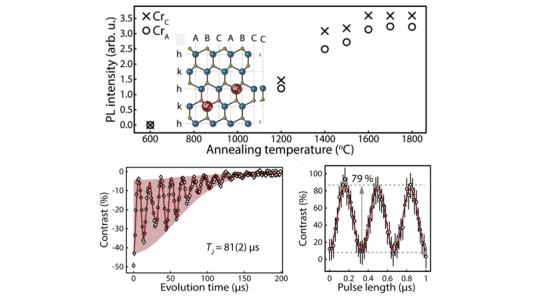
Scientific Achievement
We created chromium ions (Cr4+) in commercial 4H silicon-carbide and measured long spin coherence times with high readout fidelities.
Significance and Impact
We measured the optical and spin dynamics of Cr4+ defect ensembles as a promising extrinsic, optically active spin qubit in silicon carbide.
Research Details
- An implantation and annealing process was demonstrated that produces high quality chromium spin defects in 4H-SiC.
- An ensemble optical hole linewidth of 31 MHz was measured, displaying an order of magnitude improvement over as-grown samples.
- The governing optical and spin rates were characterized to maximize high fidelity readout (79%).
- Coherent spin control of the ensemble was demonstrated, and long coherence times (T1 > 1 s and T2 = 81 μs at 15 K) were found.
Argonne National Laboratory seeks solutions to pressing national problems in science and technology. The nation’s first national laboratory, Argonne conducts leading-edge basic and applied scientific research in virtually every scientific discipline. Argonne researchers work closely with researchers from hundreds of companies, universities, and federal, state and municipal agencies to help them solve their specific problems, advance America’s scientific leadership and prepare the nation for a better future. With employees from more than 60 nations, Argonne is managed by UChicago Argonne, LLC for the U.S. Department of Energy’s Office of Science.
The U.S. Department of Energy’s Office of Science is the single largest supporter of basic research in the physical sciences in the United States and is working to address some of the most pressing challenges of our time. For more information, visit https://energy.gov/science.